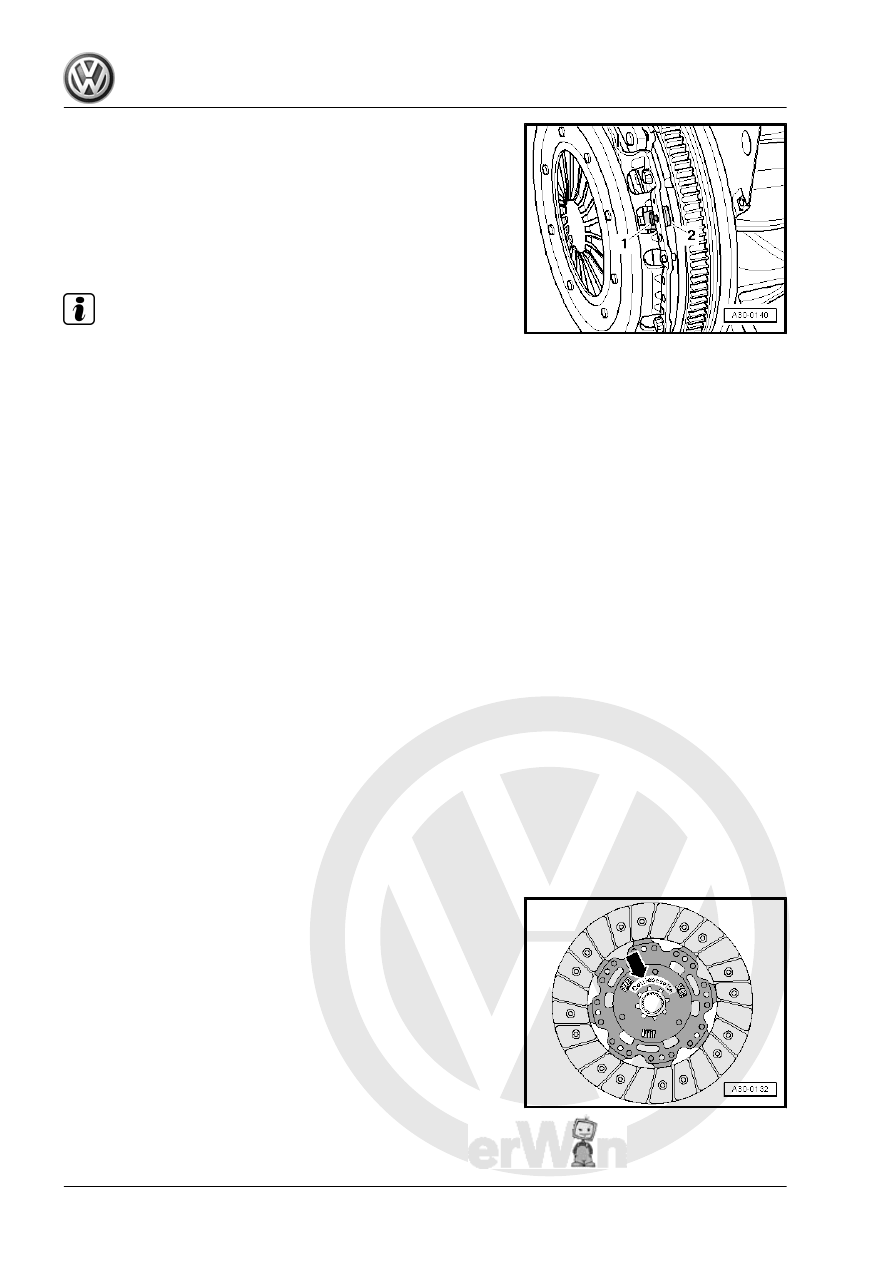Volkswagen Golf / Golf GTI / Golf Variant. Manual - part 568

• When loosening, the stop -2- and the bolt -1- must loosen up
together.
– If the stop does not loosen: push the bolt toward the dual mass
flywheel.
– Remove the pressure plate and the clutch plate.
Installing
Install in reverse order of removal. Note the following:
Note
♦
Allocate clutch pressure plate and clutch plate according to the
engine code. Refer to the Parts Catalog.
♦
Clean the input shaft splines and (on used clutch plates) the
hub splines. Remove any corrosion and then apply a very thin
coat of Grease for Clutch Disc Shaft Splines - G 000 100- on
the splines. Then move the clutch plate back and forth on the
input shaft until the hub moves freely on the shaft. Remove
any excess grease.
♦
The clutch pressure plates are corrosion-protected and
greased. With the exception of the friction surface on the clutch
plate, do not clean the clutch pressure plate. This will shorten
the service life of the clutch considerably.
♦
The friction surfaces on the clutch pressure plate and on the
flywheel must be cleaned thoroughly (degreased).
♦
To reduce odor caused by a burnt clutch, thoroughly clean the
clutch housing, the flywheel and the side of the engine facing
toward the transmission.
♦
Only use compressed air to clean the dual mass flywheel.
♦
The clutch plate linings must sit completely on the flywheel and
on the clutch pressure plate friction surface. Install the bolts.
♦
Tighten the bolts diagonally in small steps so as to not damage
the centering holes in the pressure plate and the centering pins
on the flywheel.
♦
Make sure the alignment sleeves for centering the engine/
transmission are installed inside the cylinder block. Install
them if necessary.
♦
If the alignment sleeves are missing, it will be difficult to shift,
there will be clutch problems and the transmission may make
noises (loose rattling).
Clutch Plate Installed Position
• “Transmission side” label faces the transmission.